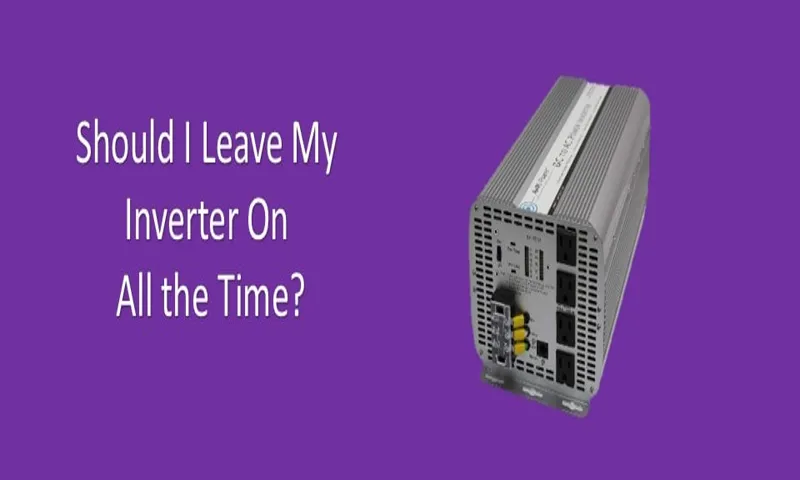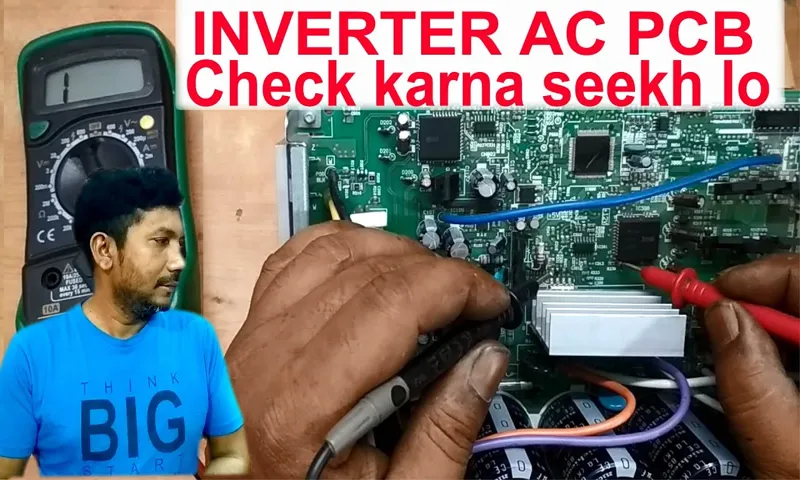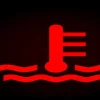Ever experienced a moment when you’re relying on your power inverter to supply electricity, only to see the dreaded word “FAULT” flashing on the display? It can be frustrating and confusing, but fear not! In this blog post, we’ll unravel the mystery behind why your power inverter may be showing this fault message. We’ll dive into the common reasons for this issue, discuss possible solutions, and provide some handy tips to prevent it from happening again in the future. So, if you’ve ever found yourself scratching your head over a “FAULT” message on your power inverter, keep reading to find out all you need to know to get it back in working order.
Table of Contents
Understanding power inverter faults
Why does my power inverter say “fault”? It can be frustrating when you rely on your power inverter to provide reliable power to your appliances or devices, only to see the word “fault” displayed on its screen. But understanding why this happens can help you troubleshoot the issue and potentially fix it yourself. There are several reasons why a power inverter may display a fault message.
One common reason is a problem with the input voltage. Power inverters usually have a specific input voltage range, and if the voltage falls outside of this range, the inverter may go into fault mode to protect itself and your devices. Another common cause of a fault message is a problem with the output voltage.
If the inverter is not able to provide a stable and consistent output voltage, it may trigger a fault condition. Other factors that may contribute to a fault message include overloading the inverter, faulty wiring or connections, low battery voltage, or overheating. Overloading occurs when you try to power too many devices or appliances that draw more power than the inverter can handle.
This can cause the inverter to become overloaded and go into fault mode. Faulty wiring or connections can also disrupt the proper functioning of the inverter and trigger a fault message. Low battery voltage can be another common cause of a fault message.
Power inverters rely on a battery as their power source, and if the battery voltage drops too low, the inverter may not be able to operate properly and will display a fault condition. Finally, overheating can also cause a power inverter to go into fault mode. If the inverter becomes too hot, it may trigger a thermal protection feature and shut down to prevent damage.
In summary, there are several reasons why a power inverter may display a fault message. These can include problems with input or output voltage, overloading, faulty wiring, low battery voltage, or overheating. By understanding these potential issues, you can begin to troubleshoot and resolve the problem, ensuring that your power inverter can continue to provide reliable power to your devices.
What is a power inverter?
power inverter faults

Why do power inverters have faults?
power inverter faults, understanding power inverter faults
Common reasons for power inverter faults
If you’re wondering why your power inverter is displaying a fault message, there are several common reasons for this issue. One possible cause is an overload on the inverter. Power inverters have a maximum power output, and if you exceed this limit by connecting too many devices or appliances, it can trigger a fault.
Another common reason for inverter faults is a short circuit. If there is a damaged wire or a faulty connection in the circuit, it can cause a fault to occur. Additionally, overheating can also lead to inverter faults.
Power inverters generate heat when converting DC power to AC power, and if they aren’t properly cooled, it can cause malfunctions. Finally, a faulty battery or incorrect wiring can also be the culprit behind a power inverter fault. If the battery is not providing a stable power supply or if the wiring is not properly connected, it can trigger a fault in the inverter.
So, next time you see a fault message on your power inverter, check for these common issues to resolve the problem.
Overload or short circuit
power inverter faults
Overheating
power inverter faults
Low battery voltage
power inverter faults
Internal component malfunction
power inverter faults, internal component malfunction
Troubleshooting power inverter faults
It can be quite frustrating when your power inverter suddenly displays a fault message. But don’t worry, there are a few common reasons why this might happen. One possibility is that the inverter is experiencing an overload.
This means that it is trying to draw more power than it can handle. Another possibility is that there is a short circuit somewhere in the system. This can happen if the wiring is damaged or if there is a loose connection.
Additionally, overheating can also cause a power inverter to display a fault message. If the inverter gets too hot, it will automatically shut down to prevent any damage. Finally, it’s worth checking the input voltage to make sure it is within the operating range of the inverter.
If the voltage is too low or too high, it can cause the inverter to go into fault mode. By troubleshooting these common issues, you can hopefully get your power inverter back up and running smoothly.
Check the battery connections
power inverter faults
Inspect for visible damage
power inverter faults
Reset the inverter
power inverter faults
Test with a different device
power inverter faults. When you experience power inverter faults, one troubleshooting step you can take is testing with a different device. This can help determine whether the issue lies with the power inverter itself or with the device you are trying to power.
To test with a different device, you will need another device that can be powered by the same type of power inverter. Connect this device to the power inverter and observe if it functions properly. If it does, then the issue may be with the original device you were using.
Testing with a different device is important because it allows you to isolate the problem and identify the source of the fault. It helps you determine whether the power inverter is faulty or if there is an issue with the original device. Keep in mind that different devices may have different power requirements, so it’s important to ensure compatibility when testing with a different device.
Additionally, make sure to follow the manufacturer’s instructions and safety guidelines when connecting and using the power inverter. In conclusion, troubleshooting power inverter faults can be done by testing with a different device. This can help you determine if the fault lies with the power inverter or with the device you are trying to power.
By taking this step, you can pinpoint the source of the issue and take appropriate action to resolve it.
When to seek professional help
If you’re experiencing a “fault” message on your power inverter, it’s important to understand why this is happening and when it’s necessary to seek professional help. A fault message indicates that there is an issue with the inverter, and it’s unable to function properly. This could be due to a variety of reasons, such as a short circuit, overheating, or a problem with the internal components.
In some cases, the fault message may be a result of user error or incorrect installation. However, it’s always best to consult with a professional to accurately diagnose the problem and determine the best course of action. They will have the knowledge and expertise to troubleshoot the issue and provide appropriate solutions.
Ignoring a fault message or attempting to fix the problem yourself can lead to further damage or electrical hazards. It’s better to be safe than sorry when dealing with electrical systems, so don’t hesitate to reach out to a professional if you’re unsure about what to do with your power inverter.
Persistent faults
If you’re dealing with persistent faults in your home, there may come a time when seeking professional help is necessary. While it’s always tempting to try and fix things yourself, certain issues are best left in the hands of trained experts. For example, if you have a faulty electrical system or plumbing problem that keeps recurring, it’s a wise decision to call in a professional electrician or plumber to assess the situation.
They have the knowledge and experience to identify the root cause of the problem and provide a long-lasting solution. Additionally, attempting to fix complex issues on your own could potentially lead to further damage or even pose a safety risk. So don’t hesitate to reach out to a professional when you’re dealing with persistent faults that you can’t seem to resolve on your own.
Inverter is under warranty
“Professional help for an inverter under warranty: Knowing when to reach out” When you invest in an inverter for your solar power system, it’s important to know what to do if you encounter any issues. Luckily, if your inverter is still under warranty, you have options. While it’s tempting to try and fix the problem yourself, it’s best to seek professional help.
After all, you wouldn’t perform surgery on yourself if you had a medical issue, would you? Professional technicians not only have the necessary skills and experience to diagnose and fix the problem, but they also have access to the specific tools and equipment required. They can quickly identify whether the issue is with the inverter itself or if there are other factors at play, such as faulty wiring or other components. Plus, if the inverter is still under warranty, attempting repairs yourself could potentially void the warranty, leaving you with no recourse if further problems arise.
Remember, when it comes to your inverter, safety is paramount. Inverters are complex electrical devices and can be dangerous to handle without proper knowledge and training. By seeking professional help, you ensure the repair is done correctly and safely.
In conclusion, if your inverter is under warranty and you encounter any issues, it’s best to reach out to a professional for help. They have the expertise, tools, and experience needed to diagnose and fix the problem correctly, without risking the warranty or your safety. Don’t hesitate to ask for professional assistance when it comes to your solar power system – it’s a decision that could save you time, money, and frustration in the long run.
Safety concerns
safety concerns, seek professional help
Preventing power inverter faults
Ever wondered why your power inverter displays a fault message? There could be a few reasons for this frustrating message. One common reason is overloading the inverter. If you connect too many high-power devices to the inverter, it may exceed its capacity and trigger a fault.
To prevent this, make sure you are aware of the inverter’s power rating and only connect devices that fall within its limits. Another possible cause of the fault message is a short circuit. If there is a fault in the electrical wiring or one of the connected devices, it can cause a short circuit and trip the inverter.
Inspecting the wiring and ensuring there are no loose connections or damaged cables can help prevent this. Lastly, voltage fluctuations can also lead to a fault message. If the input voltage is too high or too low, the inverter may shut down and display a fault.
Using voltage regulators or stabilizers can help regulate the input voltage and prevent such issues. By being mindful of these factors and ensuring proper installation and maintenance, you can minimize the chances of encountering a fault message on your power inverter.
Proper installation and maintenance
power inverter faults
Avoiding overloading the inverter
power inverter faults, preventing power inverter faults, avoiding overloading the inverter Paragraph: So, you’ve invested in a power inverter to ensure a steady power supply for your electronic devices, but how can you prevent power inverter faults and avoid overloading the inverter? Well, one of the most important things to remember is to understand the wattage capacity of your inverter. Make sure you’re not exceeding the recommended load or trying to power too many devices at once. It’s like trying to fit too many suitcases into the trunk of your car – eventually, something is going to give.
Additionally, keep an eye on the temperature of your inverter. If it starts to get too hot, it might be a sign that you’re pushing it too hard. Just like our bodies, electronic devices need time to rest and cool down.
So, give your inverter a break every now and then. By taking these precautions, you’ll not only prevent power inverter faults but also prolong the lifespan of your inverter, allowing you to enjoy a reliable power supply for years to come.
Monitoring battery health
battery health, power inverter faults, monitoring, preventing In any solar power system, monitoring the battery health is crucial for ensuring the smooth operation of the system. The batteries are the heart of the system, providing energy storage for times when the sun isn’t shining. Without proper monitoring, it can be difficult to detect issues with the battery, such as low charge levels or deterioration over time.
One common problem that can occur is power inverter faults. This is when the power inverter, which converts the DC power stored in the battery into AC power for household use, malfunctions or fails entirely. Power inverter faults can lead to a loss of power or even damage to the system.
By regularly monitoring battery health, such as checking the charge levels and overall performance, you can catch potential issues before they become significant problems. This proactive approach can help prevent power inverter faults and ensure that your solar power system continues to operate efficiently and effectively.
Conclusion
Well, it appears that your power inverter is trying to pull a Houdini on you by faulting itself. As much as we’d love to believe in the magical abilities of power inverters, the reality is that they can sometimes be a bit temperamental. When a power inverter says “fault,” it’s essentially throwing a tantrum, telling you that something isn’t quite right in its little power-converting world.
Now, the question remains as to why your power inverter would choose to declare a fault in the first place. It could be a multitude of reasons. Perhaps it’s feeling a little overloaded, like a burdened backpacker on a treacherous mountain hike.
Or maybe there’s a pesky electrical glitch, causing the inverter to go haywire like a robotic dance party gone wrong. Regardless of the specific reason, it’s important to address this fault promptly. Think of it as a call from your power inverter for a little TLC.
You might need to give it a break and reduce the load it’s handling, much like you’d give your tired feet some respite after a long day of wearing uncomfortable shoes. If the fault persists, it might be time to play detective and investigate further. Check the connections, make sure everything is snug and secure, and ensure that no mischievous critters have decided to set up camp in your inverter.
Sometimes, it’s the tiniest of culprits that cause the biggest stir. Remember, troubleshooting your power inverter is like solving a riddle. It requires patience, wit, and a dash of Sherlock Holmes-level deduction skills.
So roll up your sleeves, put on your metaphorical detective hat, and get ready to crack the case of the faulting power inverter. In the end, just remember that power inverters are just like us humans; they have their faults and moments of imperfection. But with a little love and attention, they can be coaxed back into their efficient, electricity-transforming selves.
FAQs
Why does my power inverter say “fault”?
Your power inverter may be indicating a fault due to various reasons such as overloading, short circuit, overheating, or a malfunction in the inverter itself. It is recommended to consult the user manual or contact the manufacturer for troubleshooting steps.
How can I fix a “fault” error on my power inverter?
To fix a “fault” error on your power inverter, you can try the following steps:
– Check for any loose connections and tighten them if necessary.
– Ensure that the inverter is not overloaded and remove any excess load.
– Allow the inverter to cool down if it has overheated.
– Reset the inverter by disconnecting it from the power source for a few minutes and then reconnecting it.
– If the fault persists, contact the manufacturer or seek professional assistance.
What are the common causes of a “fault” error on a power inverter?
A “fault” error on a power inverter can be caused by several factors, including:
– Overloading the inverter beyond its specified capacity.
– A short circuit in the electrical system connected to the inverter.
– Overheating of the inverter due to inadequate ventilation or prolonged use.
– An internal malfunction or failure of the inverter’s components.
– Inadequate battery voltage or low battery charge.
– Power surges or fluctuations in the input power source.
How can I prevent “fault” errors on my power inverter?
To prevent “fault” errors on your power inverter, consider the following precautions:
– Read and follow the manufacturer’s guidelines and instructions.
– Do not overload the inverter and ensure that the load remains within its specified limit.
– Maintain good ventilation around the inverter to prevent overheating.
– Regularly inspect and clean the inverter’s connections and wiring.
– Use high-quality batteries with sufficient voltage and capacity.
– Install surge protectors or voltage stabilizers to protect the inverter from power fluctuations.
Can a “fault” error on my power inverter be fixed without professional help?
Some “fault” errors on power inverters can be resolved without professional help by following the troubleshooting steps mentioned in the user manual. However, if the issue persists or if you are unsure about the problem, it is recommended to seek professional assistance to avoid any further damage or safety risks.
How long do power inverters usually last before encountering a “fault” error?
The lifespan of a power inverter before encountering a “fault” error can vary depending on various factors such as usage, quality of components, and maintenance. Generally, a well-maintained and properly used power inverter can last anywhere from 5 to 15 years before experiencing any significant issues.
Why does my power inverter display a “fault” error even when there is no apparent issue?
In some cases, power inverters may display a “fault” error even when there is no apparent issue. This can be due to a malfunction in the inverter’s internal circuitry or sensors. It is advisable to contact the manufacturer or seek professional assistance to diagnose and rectify the problem.



